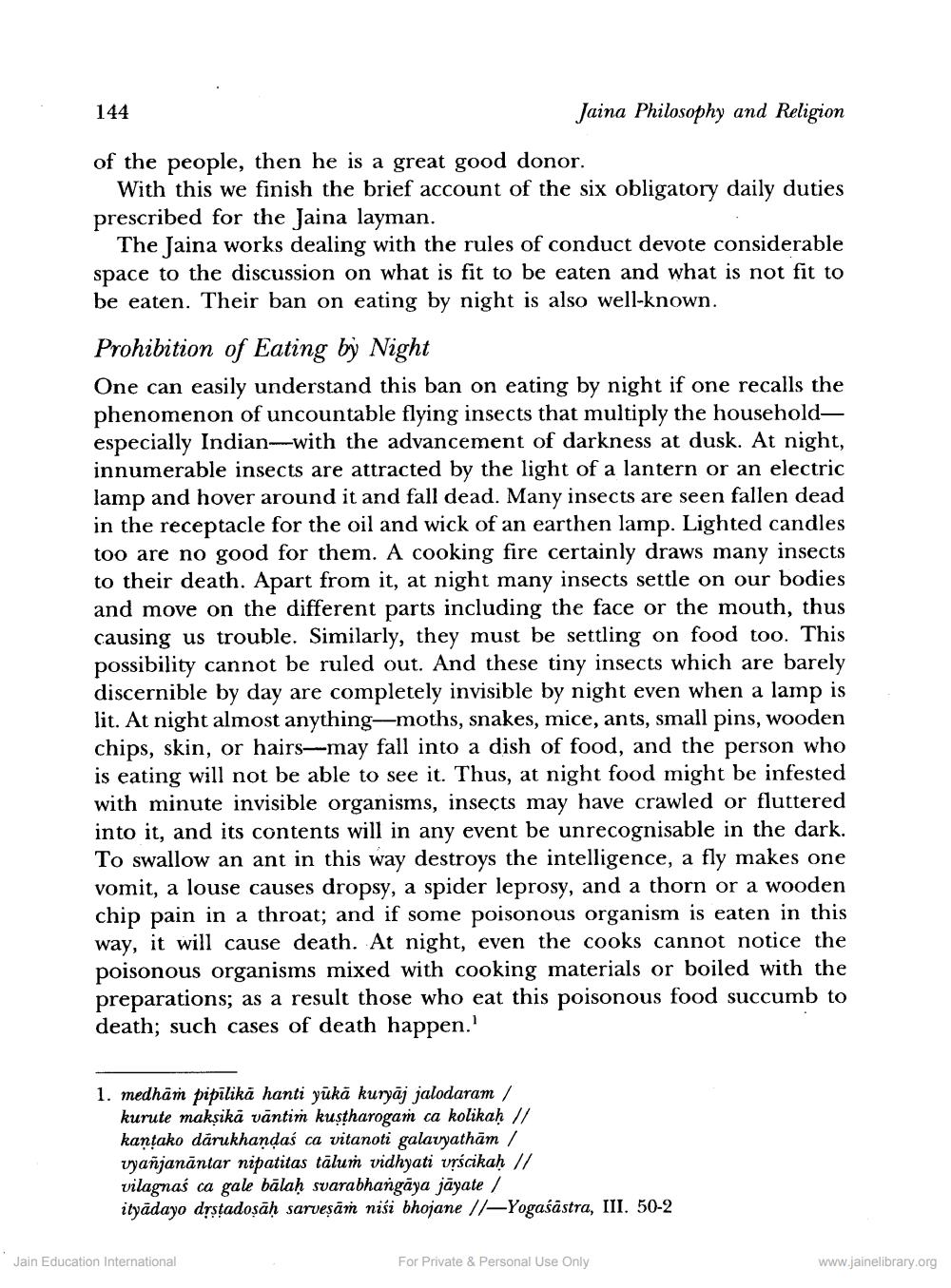________________
144
Jaina Philosophy and Religion
of the people, then he is a great good donor.
With this we finish the brief account of the six obligatory daily duties prescribed for the Jaina layman.
The Jaina works dealing with the rules of conduct devote considerable space to the discussion on what is fit to be eaten and what is not fit to be eaten. Their ban on eating by night is also well-known.
Prohibition of Eating by Night One can easily understand this ban on eating by night if one recalls the phenomenon of uncountable flying insects that multiply the household especially Indian--with the advancement of darkness at dusk. At night, innumerable insects are attracted by the light of a lantern or an electric lamp and hover around it and fall dead. Many insects are seen fallen dead in the receptacle for the oil and wick of an earthen lamp. Lighted candles too are no good for them. A cooking fire certainly draws many insects to their death. Apart from it, at night many insects settle on our bodies and move on the different parts including the face or the mouth, thus causing us trouble. Similarly, they must be settling on food too. This possibility cannot be ruled out. And these tiny insects which are barely discernible by day are completely invisible by night even when a lamp is lit. At night almost anything—moths, snakes, mice, ants, small pins, wooden chips, skin, or hairs—may fall into a dish of food, and the person who is eating will not be able to see it. Thus, at night food might be infested with minute invisible organisms, insects may have crawled or fluttered into it, and its contents will in any event be unrecognisable in the dark. To swallow an ant in this way destroys the intelligence, a fly makes one vomit, a louse causes dropsy, a spider leprosy, and a thorn or a wooden chip pain in a throat; and if some poisonous organism is eaten in this way, it will cause death. At night, even the cooks cannot notice the poisonous organisms mixed with cooking materials or boiled with the preparations; as a result those who eat this poisonous food succumb to death; such cases of death happen.'
1. medhäm pipilika hanti yūkā kuryāj jalodaram /
kurute maksikā vāntim kustharogam ca kolikaḥ // kanțako dárukhandaś ca vitanoti galavyathām / vyañjanāntar nipatitas tālum vidhyati vrścikah // vilagnaś ca gale bālaḥ svarabhangāya jāyate / ityādayo dystadosāḥ sarveșām nisi bhojane 17-Yogaśāstra, III. 50-2
Jain Education International
For Private & Personal Use Only
www.jainelibrary.org




